Ancient World Questions. Uncover Historical Insights and Biblical Connections
Delve into our curated list of questions about the ancient world, exploring historical insights and their biblical connections. Perfect for history buffs and Bible scholars alike. Discover the answers today!

Why were the Seven Hills of Rome Significant?
The seven hills of Rome were very noticeable in the landscape of the city of Rome. The hills were no higher than 60 yards, but they had steep slopes that rose above the flat marshland. Several small streams flowed between the seven hills. The names o...
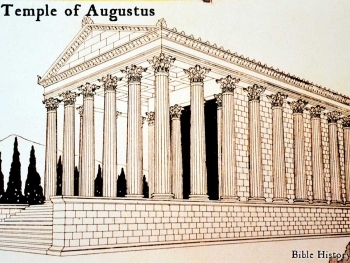
Did Augustus Build a Temple at the Site of Caesarea Philippi?
Yes there are remains of a Temple of Augustus at the site of ancient Paneas or Caesarea Philippi. This illustration depicts a Temple of Augustus. The temple at Caesarea Philippi would have been built in a similar style. Augustus was fascinated with t...

Did the Ancient Assyrians Impale their Victims?
History records that the Assyrians were ruthless to any enemy that tried to withstand them. One inscription from an Assyrian King Tiglath-Pileser records: “I built a wall before the great gates of the city; I flayed the chief men of the rebels, and...
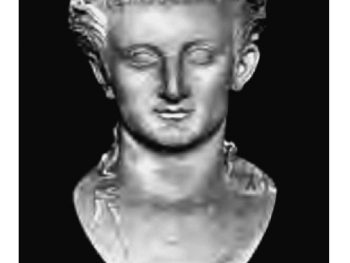
Did Tiberius Caesar Know Jesus was Being Crucified?
It is not known whether Tiberius had heard of Jesus, or knew about the crucifixion of Jesus. Word about Jesus and his miracles spread quickly throughout the Roman Empire, even to the Imperial Palace on Palatine Hill, but Tiberius had retired to his p...
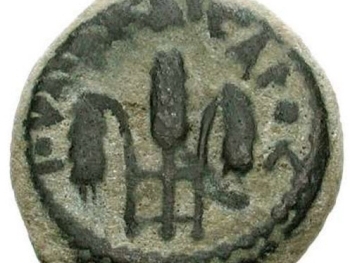
Do Any Ancient Historians Mention Pontius Pilate?
The ancient historian Tacitus mentioned Pontius Pilate by name (Ann. xv. 44) and that he was appointed in A.D. 25-26, “in the twelfth year of Tiberius.” Pontius Pilate was the sixth Roman procurator of Judea, and under him our Lord worked, suffer...
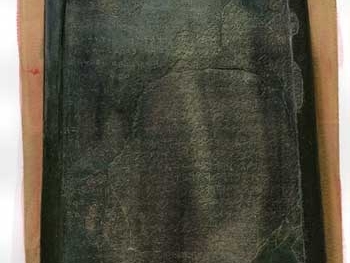
Do any Archaeological Discoveries Mention Israel?
The Moabite Stone was discovered in 1868 about 20 miles east of the Dead Sea at Moab. It was a black and blue basalt stone dating back to around 830 BC, discovered by a German Missionary named F.A. Klein. It contains an inscription that reads: “I M...
Do any Archaeological Discoveries Mention King David?
Yes, archaeological discoveries have provided evidence that supports the existence of King David, a significant figure in biblical history. While there are no direct inscriptions or artifacts that mention King David by name, several discoveries have ...
Does the Bible Mention the Mediterranean Sea?
Yes, the Bible mentions the Mediterranean Sea on multiple occasions, as it played a significant role in the geographical and cultural context of the biblical world. Here are a few references: In Exodus 23:31, God promises to give the Israelites the l...

How did Beards look in Ancient Times?
In ancient times beards came in various styles and shapes. In ancient Egypt the beard was a symbol of status, in ancient India the beard was a symbol of dignity. In ancient Assyria, Babylon and Persia the beard was cared for with great detail, they o...
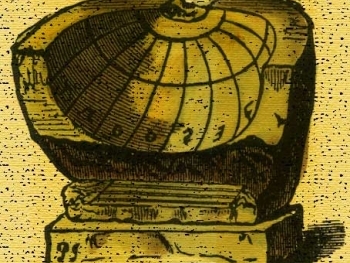
How Did the Ancient Sun Dial Work?
The ancient sun dial reveals the hours in a day. It has a surface with hour lines and a stick or gnomon which casts a shadow as the sun advances in its daily course. The sun dial is mentioned in the Bible as far back as the time of King Ahaz. Herodot...
How did Topography influence the people of Ancient Greece?
The people of ancient Greece developed unique characteristics because of the topography of their country. The coastline curved inward very peculiarly, causing the bays to become very prominent, and stretching far out into the Mediterranean Sea. This ...
How was Abraham Dressed?
The Bible does not provide specific details about Abraham's dress or clothing. However, we can infer some general information about the attire of people during that time period and cultural context. Abraham lived during the early second millennium BC...
How was Jesus’ Name Written?
The name of Jesus, in its original language, was written in Hebrew as יֵשׁוּעַ (Yeshua) or יְהוֹשֻׁעַ (Yehoshua). In the New Testament, the name appears in Greek as Ἰησοῦς (Iēsous). The specific form used in the Bible depen...
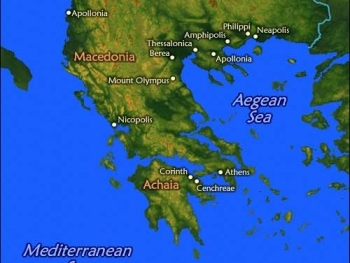
How were the people of Ancient Greece influenced by Topography?
The people of ancient Greece developed unique characteristics because of the topography of their country. The coastline curved inward very peculiarly, causing the bays to become very prominent, and stretching far out into the Mediterranean Sea. This ...
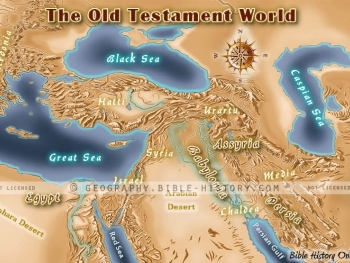
Is the Black Sea Mentioned in the Bible?
The Black Sea was known in ancient times as the Euxine and in the Roman Empire as Pontus Euxinus, and many ships sailed along its borders. The Black Sea was not mentioned in the Bible, although it was a northern boundary in the Roman Empire and the N...
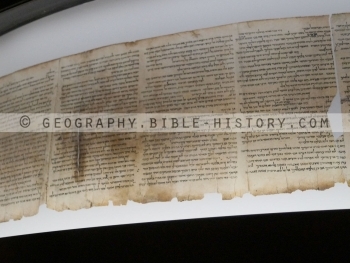
Is the Hebrew Text on the Scroll of Isaiah Accurate?
Among the Dead Sea Scrolls discovered in 1947 was found the “Scroll of Isaiah” inside of a clay jar and well preserved, dating to the 2nd century BC. The entire Hebrew text of the prophet Isaiah was found in “perfect” condition. When compared...
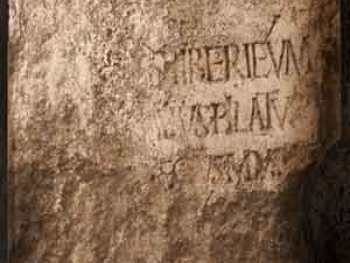
Is There any Archaeological Evidence of Pontius Pilate?
The Pilate Inscription is an inscribed relief with a dedicatory inscription to Tiberius Caesar bearing the name Pontius Pilate. It was discovered among the ruins of ancient Caesarea Maritima. It is the only known occurrence of the name Pontius Pilate...
Was the Adriatic Sea a Place of Sudden Storms?
The Bible does not specifically mention the Adriatic Sea as a place of sudden storms. However, the Bible does contain accounts of storms and tempests occurring at sea in various locations, emphasizing the unpredictable and perilous nature of such eve...
About
Welcome to Free Bible: Unearthing the Past, Illuminating the Present! Step into a world where ancient history and biblical narratives intertwine, inviting you to explore the rich tapestry of human civilization.
Discover the captivating stories of forgotten empires, delve into the customs and cultures of our ancestors, and witness the remarkable findings unearthed by dedicated archaeologists.
Immerse yourself in a treasure trove of knowledge, where the past comes alive and illuminates our understanding of the present.
Join us on this extraordinary journey through time, where curiosity is rewarded and ancient mysteries await your exploration.
Recent posts
-

Faith Through Art: Bible Craft Ideas for Teens and Children
Faith can take many forms—spoken, sung, or even painted. For teens and children, expressing spirituality through art is a hands-on way to explore biblical themes while having fun and developing creative skills. Crafting allows young believers to interact with stories, symbols, and lessons in a way that feels personal and... -

The Kings of Persia in the Bible: Historical and Theological Perspectives
The Persian Empire looms large in the latter chapters of the Hebrew Bible, not only as a dominant world power but as an unexpected instrument of divine will. While ancient empires like Egypt, Assyria, and Babylon are often depicted as oppressors of Israel, the kings of Persia occupy a more... -

Babylon, Persia, and the Exile: How Iran Shaped Jewish Identity
The Babylonian exile is often seen as one of the darkest moments in Jewish history—a time of destruction, displacement, and despair. Yet, it was also a transformative period, one that reshaped Jewish faith, practice, and identity in profound ways. While Babylon (in modern-day Iraq) was the setting for exile, it... -

Zion and Susa: Two Sacred Cities in Dialogue Through History
At first glance, Zion—the biblical name for Jerusalem—and Susa—the ancient royal city of Persia—seem worlds apart. One is the spiritual heart of the Hebrew Bible and Jewish tradition; the other, a seat of imperial power in ancient Iran, known from royal inscriptions and palatial ruins. Yet within the pages of... -

Apocalyptic Visions and Persian Power: Iran in the Books of Daniel and Ezra
Ancient Persia—modern-day Iran—plays a pivotal but often underexplored role in the prophetic and apocalyptic literature of the Hebrew Bible. Two books in particular, Daniel and Ezra, shed light on the complex intersection of divine vision and imperial rule. Set against the backdrop of Persian dominance, these texts offer both a...
Main Menu
- Ancient Assyrian Social Structure
- Ancient Babylonia
- Ancient Canaan During the Time of Joshua
- Ancient History Timeline
- Ancient Oil Lamps
- Antonia Fortress
- Archaeology of Ancient Assyria
- Assyria and Bible Prophecy
- Augustus Caesar
- Background Bible Study
- Bible
- Biblical Geography
- Fallen Empires - Archaeological Discoveries and the Bible
- First Century Jerusalem
- Glossary of Latin Words
- Herod Agrippa I
- Herod Antipas
- Herod the Great
- Herod's Temple
- High Priest's in New Testament Times
- Jewish Literature in New Testament Times
- Library collection
- Map of David's Kingdom
- Map of the Divided Kingdom - Israel and Judah
- Map of the Ministry of Jesus
- Matthew Henry Bible Commentary
- Messianic Prophecy
- Nero Caesar Emperor
- Online Bible Maps
- Paul's First Missionary Journey
- Paul's Second Missionary Journey
- Paul's Third Missionary Journey
- Pontius Pilate
- Questions About the Ancient World
- Tabernacle of Ancient Israel
- Tax Collectors in New Testament Times
- The Babylonian Captivity
- The Black Obelisk of Shalmaneser
- The Books of the New Testament
- The Court of the Gentiles
- The Court of the Women in the Temple
- The Destruction of Israel
- The Fall of Judah with Map
- The History Of Rome
- The Incredible Bible
- The Jewish Calendar in Ancient Hebrew History
- The Life of Jesus in Chronological Order
- The Life of Jesus in Harmony
- The Names of God
- The New Testament
- The Old Testament
- The Passion of the Christ
- The Pharisees
- The Sacred Year of Israel in New Testament Times
- The Samaritans
- The Scribes
Ancient Questions
- What is the Extent of the Old Testament World?
- Where did the Israelites Cross the Red Sea?
- Why was Pompey Referred to as “The Great”?
- Was the Adriatic Sea a Place of Sudden Storms?
- What were the religious beliefs and practices of the ancient Egyptians?
- How did ancient Chinese society and culture differ from Western civilizations?
- How were the people of Ancient Greece influenced by Topography?
- What did the Arch of Titus Commemorate?
- Do Any Ancient Historians Mention Pontius Pilate?
- What was the Wilderness of Judea?
Bible Study Questions
- Analyzing the New Century Version (NCV): Language Examples and Comparison with Other Bible Translations
- A Detailed Historical Analysis of the American Standard Version (ASV): Comparison to the King James Version, Influence on Later Translations, and Evaluation of Strengths and Weaknesses
- The World English Bible (WEB): Specific Aspects, Comparison to the ASV, Impact on Bible Study, and Implications of Its Public Domain Status
- What is the Incarnation?
- The New King James Version (NKJV): Specific Aspects, Comparison to the KJV, Impact on Bible Study, and Theological Distinctives
- The Five Key Visions in the New Testament
- Exploring the Good News Bible (GW): Historical Aspects, Comparative Analysis, Impact on Bible Study, and Theological Distinctives
- An In-Depth Examination of the NASB1995: Key Aspects, Comparison to the Original NASB, Impact on Bible Study, and Theological Distinctives
- Enhancing Bible Study with the Mounce Reverse Interlinear: A Detailed Analysis and Comparison
- What is the meaning and purpose of baptism?